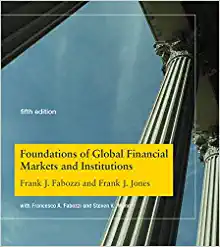1. In an article, Pablo A. Guerron-Quintana explains the difference between risk and uncertainty as follows: Consider...
Question:
1. In an article, Pablo A. Guerron-Quintana explains the difference between risk and uncertainty as follows:
Consider the experiment of flipping a fair coin (Case A). In this experiment, the unknown is whether the coin will land heads or tails. Because we are dealing with a fair coin, we know that the odds of heads after each flip are 50–50. That is, if we were to flip the coin let’s say 100 times, the coin would land, on average, 50 times heads and 50 times tails. The crucial insight from this experiment is the observation that we know exactly the odds of each of the possible events: 50 percent heads and 50 percent tails. Furthermore, we have this knowledge before starting the experiment.…
Now let’s consider an alternative experiment (Case B). As before, we are interested in learning the result of flipping a coin. The key difference is that we know the coin is no longer fair, but we do not know the odds of obtaining heads. Furthermore, the coin is replaced by a new (and unfair) coin after each flip. Under this scenario, the only thing we know is that the coin will land either heads or tails. If we were thinking about flipping the coin 100 times, we could not (before we start the experiment) tell how many times the coin will land on heads.11
a. Which of the two experiments is an example of Knightian uncertainty?
Explain why.
b. Which of the two experiments is an example of Knightian risk? Explain why.
Step by Step Answer:

Foundations Of Global Financial Markets And Institutions
ISBN: 9780262039543
5th Edition
Authors: Frank J. Fabozzi, Frank J. Jones, Francesco A. Fabozzi, Steven V. Mann






